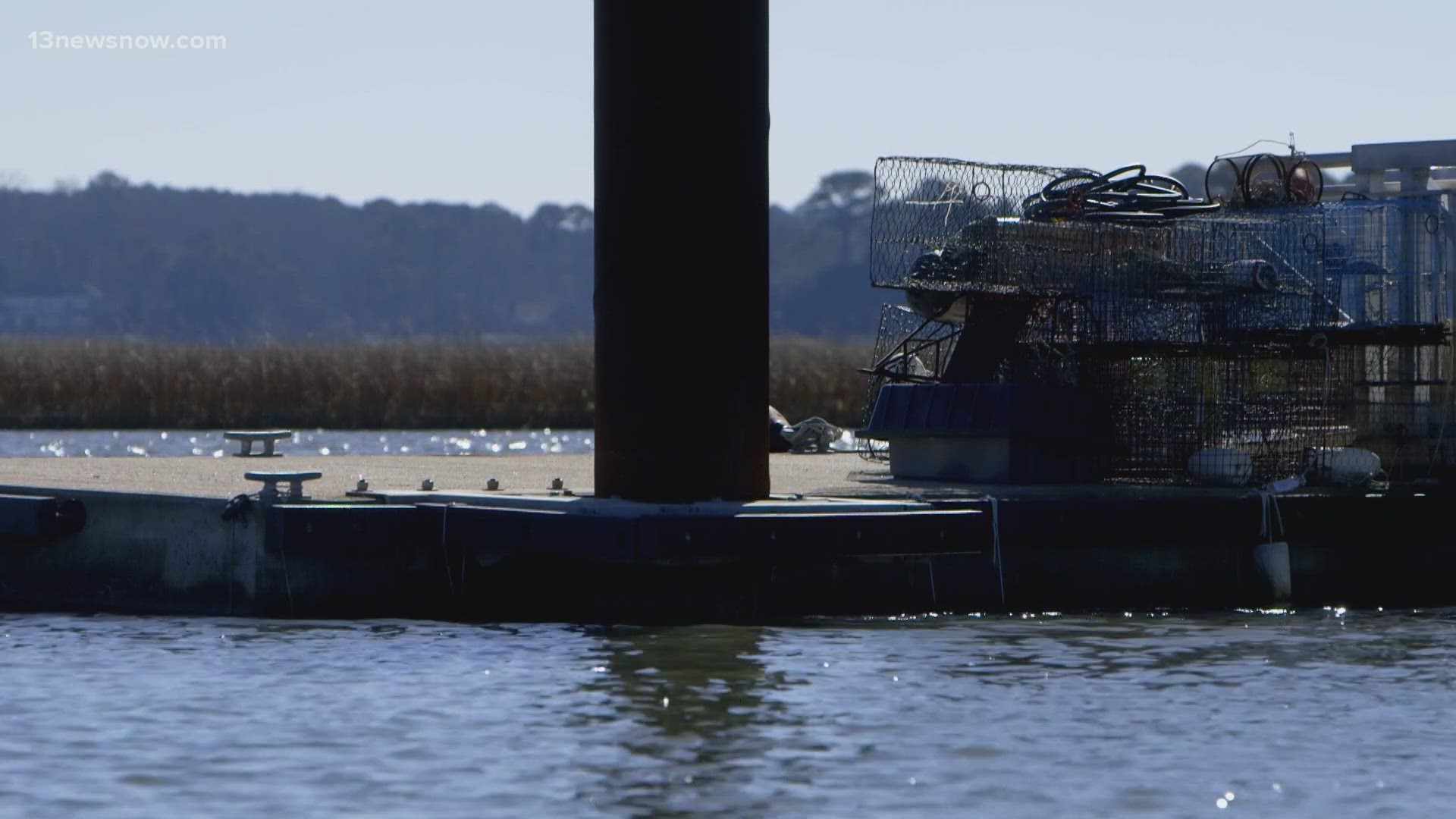VIRGINIA, USA — For the same reasons Skip Gibson loves the proximity to the water and the lifestyle of coastal living, he recognizes the inherent risk that comes with it too.
“If you were here 15 years ago, it was a constant of backup of water on the streets," Gibson, from the backyard of his North End neighborhood property.
Coastal flooding is a longtime environmental issue for the Tidewater region — one that both city governments and city residents have worked to adapt to.
However, recent Virginia Tech research is now getting national recognition, because it highlights the rate of subsidence — or sinking —that land masses across the East Coast are experiencing yearly, which may be causing an accelerated rate of sea level rise.
The report, Slowly but surely: Exposure of communities and infrastructure to subsidence on the US east coast, was published by the National Academy of Sciences of the United States in early January after it was accepted in early December.
"We utilized measurements of vertical land motion rates obtained from analysis of radar datasets to evaluate the subsidence-hazard exposure to population, assets, and infrastructure systems/facilities along the US east coast," begins the study.
The researchers, including Patrick L. Barnard with the United States Geological Survey, Virginia Tech Associate Professor Manoochehr Shirzaei and lead author Leonard Ohenhen, a graduate student, compiled evidence-based data to demonstrate the rate of subsidence for counties and cities along the East Coast. The Hampton Roads region of Virginia is one of few metro areas that sees an approximate subsidence rate of 2 millimeters per year.
The report found:
"...only 6 to 32 counties have a high percent area (>60%) exposed to land subsidence for the different subsidence hazard severity (subsidence rates >0 mm per year to >2 mm per year). These counties include some major metropolitan areas on the US east coast, including Hampton (VA), Norfolk (VA), Virginia Beach (VA), Chesapeake (VA), Baltimore City, (MD), Union (NJ), Middlesex (NJ), Monmouth (NJ), Ocean (NJ), New Haven (CT), and several counties in New York City (Queens, Bronx, Nassau, and Westchester..."
“Sinking for a number of reasons, old fills from years ago so less than ideal building materials. Prior creek beds being reclaimed with rising sea levels, thermal expansion of water with melting ice caps. Groundwater withdrawal, isostatic rebound, several issues that cause subsidence, which creates a higher relative sea level rise," Christy Everett, Hampton Roads Director at the Chesapeake Bay Foundation says. "Hampton Roads is a hotspot for relative sea level rise, subsidence is driving a lot of that."
Subsidence rates can vary even within regions, the research shows. While the region as a whole is recorded with roughly 2 mm of subsidence every year, neighborhoods such as Virginia Beach's North End neighborhood may see as much as 2.5 mm every year.
“I think the study was excellent, I read it four times," Gibson laughed.
Gibson said he doesn't believe reports about environmental concerns should deter families and residents away from moving to coastal communities. He does acknowledge that they need to act as the basis for change at the city government level and even what community leaders like him can do to help.
"You have to add that small change with rising sea levels increased temperature, it’s not one factor it's many factors and when you put those together you have a much larger issue to address," he added.
Oceanfront resident, Mark Huddleston, doesn't consider it a "huge concern" but does recognize the potential for it to be problematic more in the future.
"Part of my reasoning behind that is, you see people buying and building very expensive homes on the beach, and the banks are financing them. If the bank was financing them, would they finance them if you thought it would be underwater in 20 years? I'm not saying it’s not a concern, but still," he said.
Almost every county or city along the entire eastern seaboard is experiencing at least some subsidence levels above 0 mm per year, even if that number is only 0 to 20 percent of a locality.
However, the Hampton Roads region is one of a small handful where the localities are experiencing subsidence levels greater than 2 mm that impact a majority of that locality's land.
On the Eastern Shore, some areas may be experiencing as high as 5 mm of subsidence difference every year.
The full report can be viewed in the Proceedings of the National Academy of Sciences.

